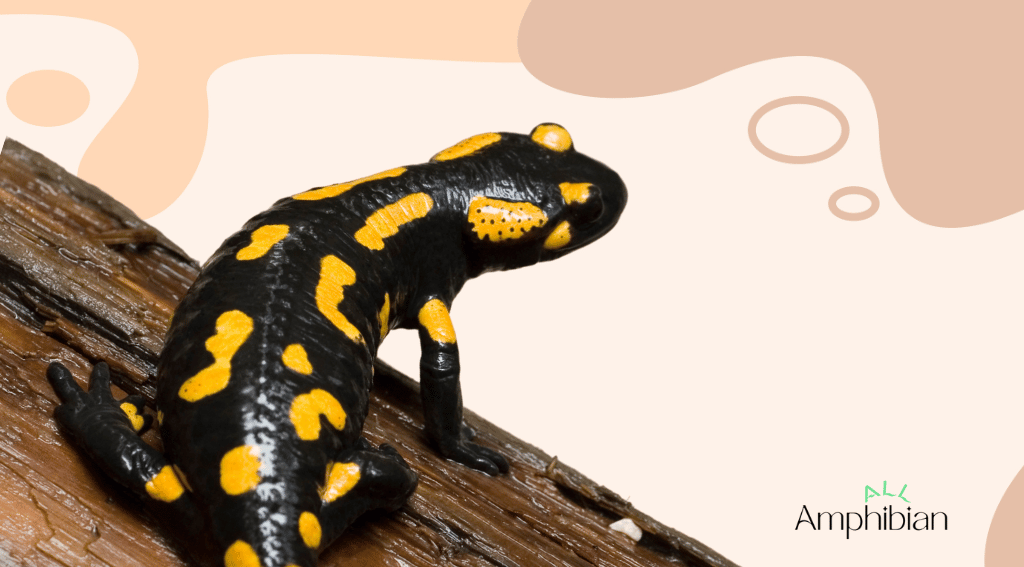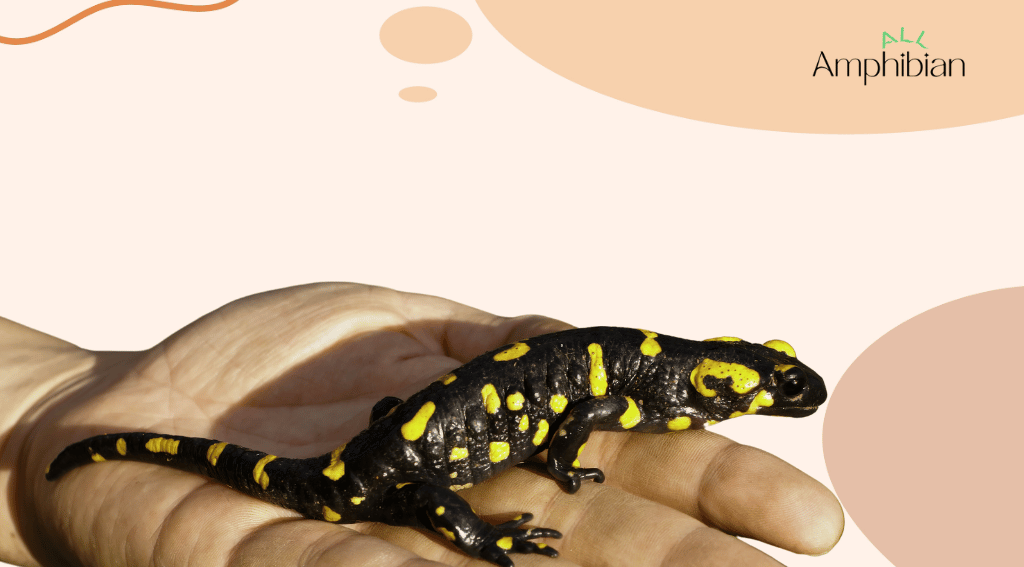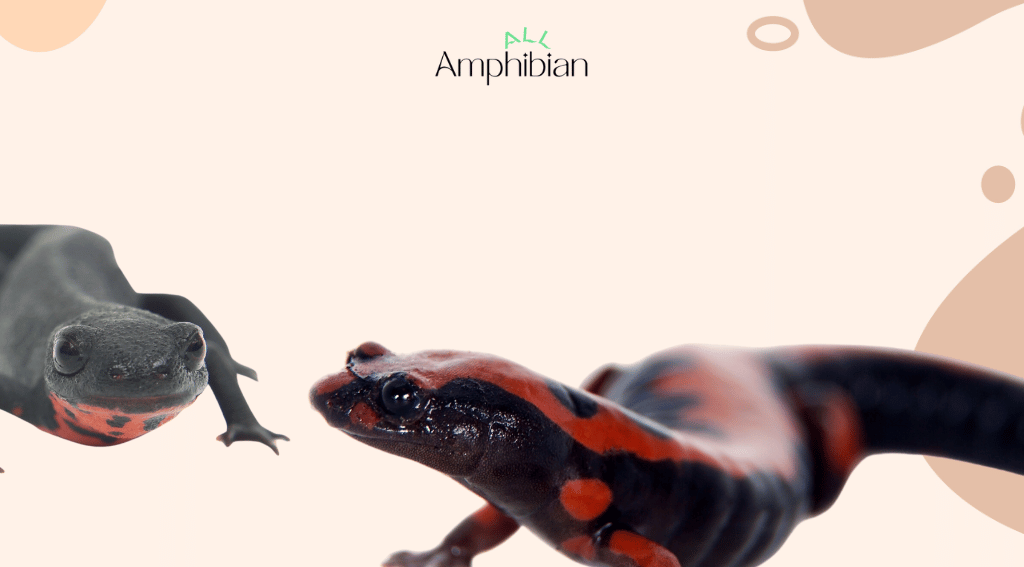Are salamanders warm or cold-blooded? What animals are cold-blooded? What is the difference between warm-blooded and cold-blooded creatures? Why do we not see salamanders in the cold season? If you don’t know the answers to these questions, So keep reading because we will tell you the answers at all Amphibian.
Are salamanders warm or cold-blooded?

Salamanders are amphibians and all amphibians are cold-blooded. It means that they cannot control their body temperature, and their body temperature changes with the temperature of the environment. Cold-blooded animals, unlike warm-blooded animals, cannot produce heat in their bodies, and for this reason, they are unable to control their body temperature.
This causes their body temperature to change with the ambient temperature. When the weather is cold, their body temperature decreases, and their activity decreases, and when the weather is hot, their body receives heat from the surrounding environment and warms up.
Salamanders are also cold-blooded animals. When the weather is hot, Salamanders absorb the heat of the environment; for this reason, they hide under rocks and under leaves to escape from the heat and cool down, away from the heat of the sun. They continue to be active when the weather is cool; that’s why they are more active at night or when the weather is cloudy.
What are warm-blooded animals?
Warm-blooded creatures like humans can keep their bodies warm by producing internal heat, and their body temperature is always constant. This is done through cellular metabolism. Cells are like small machines that consume nutrients and oxygen and produce energy when they start working. This work is the same as intracellular metabolism, which produces some heat in addition to energy production. Warm-blooded animals can control their body temperature.
Their body can produce heat, and for this reason, their body temperature increases during activity and movement because the activity of cells increases, and the result of heat production increases. Warm-blooded organisms keep their body temperature higher than the ambient temperature by producing heat when the ambient temperature is low. And when the ambient temperature is high, they remove excess heat from their body in several ways, such as sweating. This way, their body temperature always remains constant.
How do salamanders control their body temperature?

Because salamanders cannot generate heat inside their bodies, they use other heat sources. For this reason, they use the sun when their body temperature is low, and they need heat. Most cold-blooded animals do this; that’s why snakes stay under the sun in the morning so that their bodies are warmed up and they can move.
Salamanders go to cool places like under leaves and stones when their body temperature is high or use water to cool down. The skin of salamanders is always moist because they have glands that secrete mucus. When they are hot, they secrete more mucus to remove excess heat from their body through evaporation.
Also, Salamanders increase and decrease the blood flow in the subcutaneous vessels to regulate their body temperature. When salamanders want to remove heat from their body, the blood flow in the vessels close to their skin increases, causing them to lose more heat to the environment, and when they need to conserve heat, their blood flow in the vessels close to the skin decreases.
During the cold season, terrestrial salamanders hibernate. They reduce their body metabolism to a great extent and hide in holes in the ground and between cracks. At this time, due to the reduction of their body’s metabolism, they need very little food. Aquatic salamanders also go to the waters at the end of the lakes, which have a higher temperature, to spend the winter season.
Advantages and disadvantages of being cold-blooded for salamanders

You might think to yourself that life is very difficult for cold-blooded salamanders, and they must constantly try to keep their body temperature balanced. But it is not like this. Cold-blooded creatures have some advantages that warm-blooded creatures do not have. Of course, being cold-blooded has some disadvantages too.
Advantages
- Need for less food
As we said, heat is created in the body of warm-blooded creatures when they produce energy. It means that the cells must consume food to produce heat. Therefore, because salamanders do not produce heat in their bodies, they need less food and can easily live in areas where food is scarce.
- Survive without food
The second advantage of being cold-blooded for salamanders is that they can survive for long periods without food. Warm-blooded creatures like humans constantly need food, but cold-blooded creatures can survive even months without food due to their low metabolism.
- Immunity against disease
Because salamanders are cold-blooded, their body temperature is lower than warm-blooded creatures, and this temperature is completely variable. For this reason, their body is not a good host for many viruses, parasites, and bacteria because they need a warm environment to survive.
Disadvantages
- Live only in hot and humid areas
One of the disadvantages of being cold-blooded for salamanders is that they cannot live in all weather conditions. They can only survive in hot and humid areas. In areas that are constantly cold or constantly hot and dry, they cannot balance their body temperature and do not last.
- Need heat to move
Because salamanders are cold-blooded, when the temperature is low, they cannot move well and slow down. They need a heat source to move faster.
Amazing salamanders
Nearly 600 species of salamander have been identified in the world so far. Some of them live on land, and the rest are aquatic. Most of them have the same features, but there are exceptions among them that have unique features.
For example, mudpuppies salamanders can reduce their body’s metabolism by 95% and live without food for months.
Siberian salamanders can survive at a temperature of -58 degrees. Their bodies freeze in the cold, and they can survive for years in a frozen state.
Red-backed salamanders are the species that lay their eggs on land, and baby salamanders are tiny versions of their parents when they are born.
Many salamanders live on land, but they don’t have lungs and breathe through their skin.
The blue-spotted Jefferson salamander is a species that can reproduce without fertilization.
The eastern newt is another member of the salamander family that has three life stages. They are first as aquatic larvae and then enter the land from the water as young salamanders; after that, they return to the water as adults. They have a different color in each period of their life.
The blind Georgia salamander has no eyes, and a layer of skin covers the eyes.
Cyrnid salamanders are the only herbivorous salamander species.
Most species of salamander are poisonous, but the fire salamander can spray its venom on the attacking side.
Salamanders have a unique ability to regenerate their organs.
Most salamanders are between 10 and 20 centimeters, but the largest ones are up to one and a half meters long, which is called the Chinese salamander, and the smallest salamanders are less than 20 millimeters.
Some salamander species can choose to be aquatic or terrestrial. Due to factors such as conditions and suitable food in water or hot and dry conditions on land, they prefer not to undergo complete metamorphosis. They do not lose their gills and remain aquatic for the rest of their lives.
Conclusion

Like other amphibians, salamanders are cold-blooded. They cannot produce heat in their body, and they cannot regulate their body temperature. For this reason, they need an external heat source. Warm-blooded creatures like humans can keep their body temperature moderate by producing heat.
In the body of warm-blooded organisms, cells produce energy by consuming food and oxygen, and by producing energy, heat is also produced; for this reason, with the increase in activity and mobility of these organisms, their body heat also increases. Because salamanders are cold-blooded, their body temperature changes with the ambient temperature.
To regulate their body temperature in the cold season, they go to hibernate in the ground pits and deep crevices of the rocks and under the layer of forest leaves. By lowering the temperature, they reduce their body’s metabolism by 95% and can live for a long time without food.
Blue salamanders also go to the deep parts of the bottom of the lakes in the cold season, where the water temperature is higher. During the hot season, they rest under leaves and stones and in the shade during the day to stay away from the heat, and they are active at night or when the weather is cloudy.
Because salamanders are cold-blooded, they can survive without food for a long time because their bodies do not produce heat, so they need less food. Also, they often get sick because their body is not a suitable host for bacteria and parasites. But they cannot survive in areas that are constantly cold or constantly hot and dry. Because salamanders are cold-blooded, they become lazy and slow when the air temperature is low, and they need heat to move.
FAQs
Are salamanders cold-blooded?
Salamanders are cold-blooded like other amphibians, their body temperature changes with the decrease or increase of the ambient temperature, and they cannot control their body temperature.
Are salamanders warm-blooded?
Salamanders are not warm-blooded because they cannot generate heat in their bodies and need external heat sources to control their body temperature. That is why they are cold-blooded animals.
What are warm-blooded animals?
Warm-blooded creatures like humans can produce heat in their bodies. The body cells of warm-blooded organisms produce energy by consuming food and oxygen, and by producing energy, heat is also produced. For this reason, these creatures need food continuously.
How do salamanders control their body temperature?
In the cold seasons, due to the decrease in temperature, salamanders hibernate and reduce their body metabolism and can survive for several months without food. Aquatic salamanders also move to deeper parts of lakes where the water is warmer. In the hot season, they only come out at night and when the weather is cloudy to escape the heat. Also, they can regulate their body temperature by increasing and decreasing the amount of blood in their subcutaneous vessels.
What are the advantages and disadvantages of being cold-blooded?
Cold-blooded animals need less food and can spend a long time without food and survive in areas where food is scarce. Also, they are more resistant to diseases because their body is not a suitable host for bacteria and microbes. But cold-blooded animals cannot survive in constantly cold or constantly hot and dry places. Also, when the temperature is low, they cannot move well and become lazy and slow because they need heat to move.

